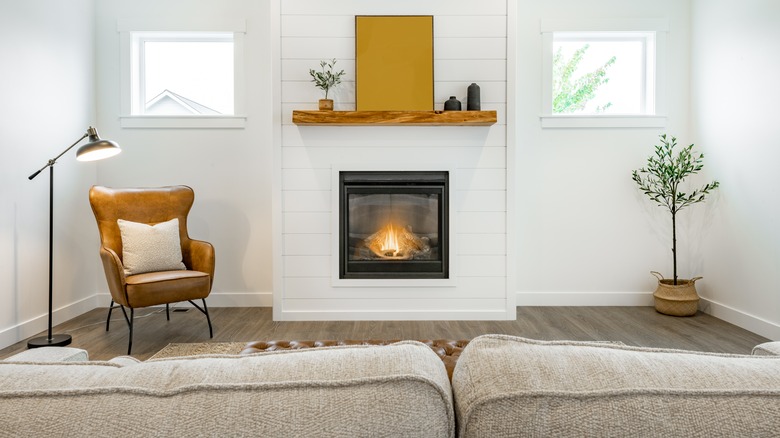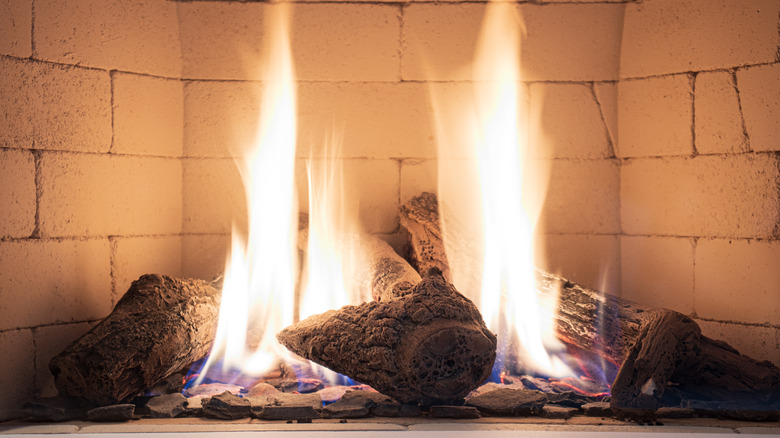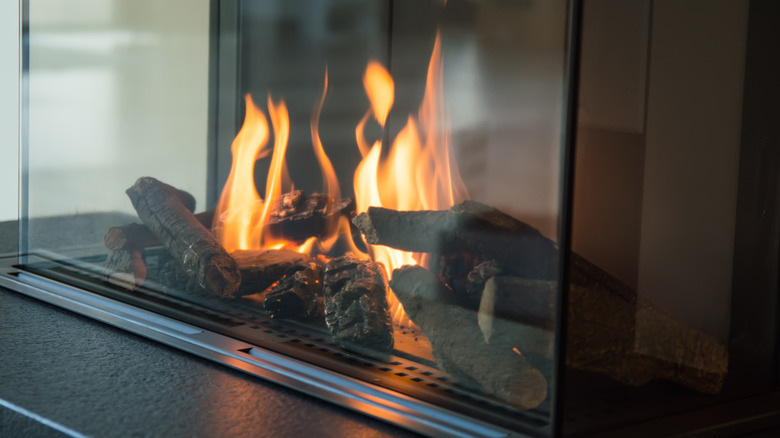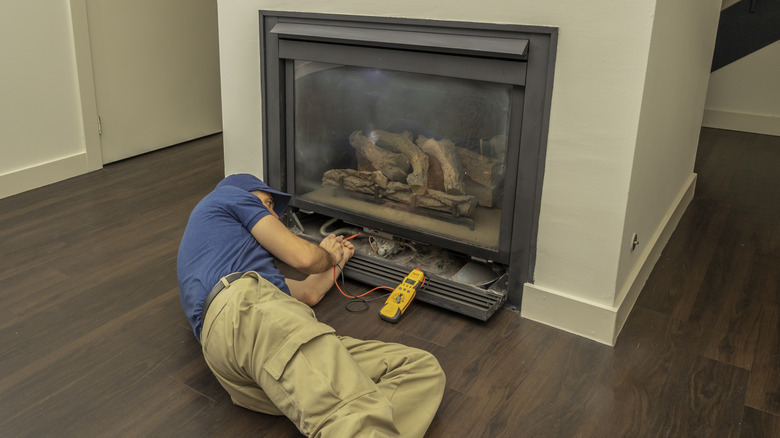Signs Your Gas Fireplace Could Be Dangerous (And How Much It Costs To Repair It)
Gas fireplaces are popular among homeowners because they can quickly warm and cozy up any space. They are also stylish enough to act as a focal point in living rooms that aren't blessed with authentic brick fireplaces. Both traditional and gas-burning options present their own set of potential safety hazards. "While gas fireplaces offer a realistic look and quickly heat any space with real flames, like anything that involves fire and gas, gas fireplaces may present potential safety issues," says Merchant of Fire and Pool for Home Depot, Ashley Murphy, via House Beautiful. But gas fireplaces aren't inherently dangerous and are used safely every day. If yours is improperly vented or cleaned or requires repairs, you could unknowingly expose your household to harmful, potentially deadly methane and carbon monoxide levels. Depending on the problem, you can expect to pay as little as $40 and as much as $2,000.
Though repairing a malfunctioning and potentially dangerous gas fireplace will inevitably cost money, the peace of mind of knowing you and your loved ones are safe while warming up by the fire is priceless. As a homeowner or renter, you should be aware of the signs indicating that your gas fireplace is dangerous to use in its current condition. You should also know how much you can expect to pay for potential repairs and prepare for recommended inspections.
Signs of carbon monoxide exposure from your gas fireplace
Carbon monoxide is a colorless, odorless gas that naturally occurs whenever there is incomplete combustion of fuel. The fact that carbon monoxide is virtually impossible to catch on your own without a detector makes it so deadly. Whether your home has a traditional wood-burning fireplace or one that runs on gas, you risk carbon monoxide exposure every time you use your fireplace. This hazard is even higher if you are misusing the hearth appliance or it isn't functioning optimally.
According to the CDC, around 430 people die yearly in the U.S. from accidental carbon monoxide poisoning. An additional 50,000 people visit the hospital annually for the same reason. Gas fireplaces are common culprits of carbon monoxide poisoning, particularly ones improperly vented or damaged in a way that doesn't allow the fumes to vent from the home correctly.
If the flames from your gas fireplace are yellow or orange instead of blue or the pilot light keeps going out, there's a good chance your fireplace may be emitting dangerous levels of carbon monoxide. Additionally, if you notice a buildup of condensation on your windows or a buildup of dark soot inside your fireplace, it's best to hold off using it until a professional can inspect and repair it. These factors could indicate an emergence of carbon monoxide.
Signs of natural gas leakage from your fireplace
In addition to the potential risk of natural gas poisoning, a gas leak in your home could also start a fire or even lead to an explosion if there is enough buildup, as natural gas is flammable and can be volatile in high concentrations. One of the telltale signs of a natural gas leak is the notorious rotten egg smell. Though natural gas is colorless and odorless, making it virtually impossible to detect on its own, gas companies add chemicals to give it an easily identifiable odor.
If a leak is strong enough, you might hear a whistling or hissing sound near your fireplace or any of its gas lines. Additionally, a buildup of natural gas can be strong enough to kill trees and other vegetation. Plants suddenly dying inside your house or a noticeable yellowing of grass and plants outside your home and near gas lines indicate a potential gas leak. It's easy to detect these if your plants typically thrive and you take good care of them. If you suspect your fireplace or any of its lines are leaking gas, apply a mixture of 8 ounces of water and a couple of teaspoons of liquid dish soap to the gas lines. Bubbles in the dish soap indicate a leak, and it's time to call a professional.
Costs related to gas fireplace repair
If the issue is with your pilot light and not the fireplace itself, the repair cost should be roughly around $150. When your gas fireplace needs a thermocouple or thermopile replacement, which is another common repair, you can expect it to cost anywhere from $150 to $250.
If you suspect your fireplace to be the source of a natural gas leak, you will need to hire a professional to safely take care of the issue, which can cost you anywhere from $45 to $200 in labor, depending on your location and the rate of who you hire. On top of the estimate, expect to pay $120 to $250 for repairs if the gas inspector finds a leak somewhere. If a gas leak in the lines leading to your fireplace is covered by drywall, you must knock out part of your wall to safely contain the leak. Should this happen, you should anticipate setting aside anywhere from $270 to $760 for when it comes time to repair the damage.
To ensure your gas fireplace is safe, inspect it professionally annually. A local professional can perform a thorough assessment and ensure all fireplace components are up to par, with most charging between $75 and $125 for the service.



